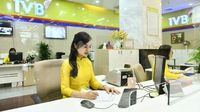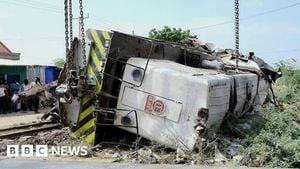As Vietnam’s economy navigates the choppy waters of 2025, the third quarter has brought a flurry of financial disclosures and a renewed sense of urgency among investors and policymakers alike. With global economic and political uncertainties swirling—ranging from US tariff policies and the specter of a global trade war to commodity price shocks and persistent inflation risks—Vietnam’s financial sector finds itself at a crossroads. The question on everyone’s mind: Which companies and sectors are truly healthy, and which numbers reflect genuine, sustainable growth?
According to reporting from Nhân Dân and other financial analysts, the current earnings season has prompted investors to scrutinize a trio of essential indicators: Earnings Per Share (EPS), Return on Equity (ROE), and operating cash flow. These three metrics are widely regarded as the compass points for gauging a company’s real value and for avoiding the pitfalls of ‘illusory profits’ that can be all too common in turbulent times.
EPS—Earnings Per Share—may seem like a small number, but it carries significant weight. Calculated by dividing net profit after tax by the average number of outstanding shares, a high EPS typically signals effective business performance. However, as Nhân Dân points out, a “pretty” EPS isn’t always good news. Sometimes, those numbers are buoyed by one-off events—such as asset sales or divestments—rather than by sustainable growth from core operations. Investors are therefore urged to look beyond the headline figure and consider the quality of profits: Where did they come from? Are they repeatable? Is EPS being diluted by the issuance of additional shares?
ROE, or Return on Equity, provides another crucial perspective. While EPS tells you how much profit is earned per share, ROE measures how effectively a company generates profit from shareholders’ equity. In the eyes of seasoned investors, a stable ROE above 15% is the gold standard for companies with solid foundations. Yet, there’s a catch: unusually high short-term ROE figures may be the result of increased financial leverage (meaning a higher debt-to-equity ratio), which can artificially inflate returns while also raising risk. That’s why it’s essential for investors to cross-reference ROE with the debt/equity ratio to get a fuller picture of a company’s health.
But perhaps the most reliable indicator of all is operating cash flow. Unlike profit, which can be massaged through accounting tricks, cash flow doesn’t lie. A healthy company should generate positive cash flow from its core business activities—meaning it takes in more cash than it spends on production, sales, and services. If a company reports hefty profits but repeatedly shows negative operating cash flow, it may be recognizing revenue that hasn’t actually been collected, or it could be building up unsold inventory and receivables. As one analyst put it, “Cash flow is the lifeblood of a business. If the blood isn’t circulating, the body will tire sooner or later, no matter how rosy the profit report looks.”
Financial statements, in theory, are meant to provide a clear reflection of a company’s condition. In practice, though, they can be anything but transparent. Profit figures can shift based on how revenue is recognized, how depreciation is calculated, or due to sudden financial windfalls or losses. This makes it all the more important, especially during the current Q3 reporting season, for investors to dig deep into EPS, ROE, and operating cash flow before making decisions. As the markets may be swayed by short-term good news, only those companies with genuine, sustainable profits will thrive in the long run.
While investors are parsing company reports, Vietnam’s macroeconomic managers are grappling with a different set of challenges. Since early 2025, the State Bank of Vietnam (SBV) has been praised for its proactive and flexible approach to monetary policy, working hand in glove with fiscal and other macroeconomic strategies. The results have been encouraging: inflation has been kept well under control, with an average rate of 3.25% over the first eight months of the year—lower than the general inflation rate, according to data from the SBV. This careful balancing act has provided a solid foundation for GDP growth, even as global headwinds persist.
Credit growth has emerged as a key driver for economic expansion. The SBV has maintained low policy interest rates since the start of the year, aiming to reduce lending costs and support both businesses and households. Credit institutions have been directed to cut operational expenses and embrace technology, all in the name of making loans more affordable. As a result, lending rates have continued to fall, easing the financial burden on borrowers. And the numbers speak for themselves: by September 29, 2025, credit to the economy had grown by 13.37% compared to the end of 2024—a higher rate than the same period last year, and one that’s been trending steadily upward.
But it’s not just about the quantity of credit—it’s about quality, too. The SBV has made it clear that credit growth must be safe and effective, with funds directed toward productive sectors and economic priorities as outlined by the government. Approximately 78% of outstanding loans now support production and business, with agriculture accounting for 22.76% and small and medium enterprises making up 19.04%. High-growth sectors such as supporting industries (23.14%) and high-tech enterprises (25.02%) are also receiving a boost. Specialized lending programs have been rolled out aggressively: nearly VND 106,000 billion has been disbursed for agriculture, forestry, and fisheries, with plans to expand to VND 185,000 billion. Social housing loans and loans for people under 35 to purchase social housing have reached about VND 4,700 billion, a 66.2% increase over the end of 2024.
Ensuring that capital flows are balanced with systemic safety remains a top priority. As Deputy Governor Pham Thanh Ha of the SBV explained, “In addition to pumping capital, the State Bank focuses on stabilizing and strengthening the internal capacity of credit institutions, ensuring that balanced capital sources go hand in hand with systemic safety.” The ongoing restructuring of credit institutions aims to maintain stability and protect the legal rights of depositors, while bad debts are being strictly managed and controlled. The recent passage of amendments to the Law on Credit Institutions, effective from October 15, 2025, marks a significant step toward aligning Vietnam’s banking system with international standards.
Yet, for all the positive indicators, experts and analysts remain cautious. The SBV and the banking system are operating under dual pressures: they must inject enough capital to support the government’s ambitious growth targets for 2025—over 8% GDP growth—while also maintaining macroeconomic stability, controlling inflation, and safeguarding financial security. Achieving 13.37% credit growth by late September is encouraging, but the real test will be whether this capital is truly fueling productive sectors and new growth engines, or if it’s seeping into riskier areas like real estate and securities. Effective risk management, ongoing restructuring, and a robust legal framework are all critical to ensuring that Vietnam’s growth remains sustainable.
Looking ahead, the SBV has pledged to continue its proactive, flexible, and coordinated approach to monetary policy, working closely with fiscal authorities to prioritize both economic growth and macroeconomic stability. The banking sector is committed to ensuring adequate, safe, and efficient credit flows to key growth drivers, while also addressing capital challenges faced by businesses and citizens. As Deputy Governor Ha emphasized, “Our top priority remains to promote economic growth while maintaining macroeconomic stability and controlling inflation.”
Meanwhile, experts highlight the need to further develop the capacity of Vietnam’s stock and corporate bond markets to meet the economy’s growing capital needs. With Vietnam poised to join the FTSE Russell’s “emerging markets” group in 2026, foreign investment flows are expected to surge. But as analysts at VDSC Research warn, these opportunities come with risks: if the investment environment, governance, and infrastructure aren’t up to par, capital could quickly flow elsewhere. The challenge, then, is not just to attract more projects, but to ensure that foreign direct investment (FDI) aligns with Vietnam’s long-term development goals. As VDSC Research notes, “When FDI chooses Vietnam for its real competitive strengths—not just low costs—then this capital truly becomes a sustainable driver of growth.”
As the year draws to a close, Vietnam’s financial sector stands at a pivotal moment. The choices made now—by investors, companies, and policymakers alike—will determine not just who thrives in the short term, but who emerges strongest in the years ahead.




